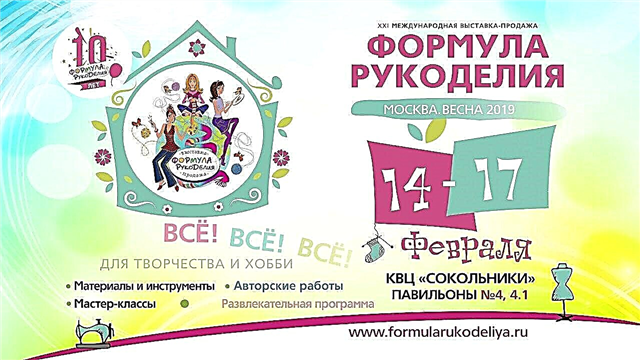If you don’t know how to knit, you don’t have an overlock and a sewing machine, and buying a ready-made sweater in an ideal price / quality ratio is akin to utopia, it doesn’t matter! You can just sew a warm sweater!

How? Easy! From a woolen knitted fabric on a sewing machine, and even on a pattern of a silk blouse:
- Special offer

- 1
- 2
- 3
- 4
The basic and moderately free cut of the model, the absence of tucks, not a narrow and not too deep armhole, practically no restrictions on the choice of fabric - all these qualities, as well as the fact that I used the pattern more than once, became decisive when choosing a model for a warm pullover.
A simple straight cut blouse - a godsend for sewing experiments
Step 1

Identify the side of the web whose slice can be easily dissolved.

Dissolve, thus aligning the bottom of the knitted fabric.

Spool the threads into a ball, they are useful for processing open sections and closing loops in a finished pullover.
Step 2

Place the paper details of the pattern on a knitted fabric.
Pin it up.

Cut back details, shelves and sleeves with 1.5 cm allowances.

We cut the neck, bottom of the product and sleeves without allowances for hem!

Transfer all control marks using the threads.
Step 3

Along the neckline of the front and back of the neck, lay the fixing stitch to the width of the foot (approximately approx. 0.7 cm from the cut).

Iron the slice.
Step 4

Fold the shelf and back with their faces to each other and chop along the side and shoulder sections.

Stitch details at a distance of 1.5 cm from the edge.
Iron the seams, and then iron on the back.
Step 5

Fold the sleeve details with the front side inward, aligning the sections.
Chop off.

Stitch the sleeve details at a distance of 1.5 cm from the edge.
Iron the seams and then iron back.
Step 6. Machining sections of seam allowances

Open the side and shoulder allowances and trim only the inside allowances.
Use the crochet hook to process the allowances by gently grabbing them to the back. How to do this, I showed in detail in the master class:
Processing of seam allowances in a product of three-dimensional knitted knitwear
Cut the sleeve allowances and work in exactly the same way.

Iron the machined allowances from the wrong side with "walking movements", rearranging the iron.
Step 7. Stitch Sleeves

Insert the sleeves into the armholes, combining all the marks on the details of the sleeves and armholes.

Stitch the sleeves.

Iron the seams.


Cut only the armhole allowance!
Treat the sections of the seam allowance of the sewing in of the sleeves in the same way as the side and shoulder allowances.
How to sew different types of sleeves
Step 8. Processing the bottom of the pullover and sleeves





Using a crochet hook, close the loops at the bottom of the product and sleeves using threads from a knitted fabric.
Read how to perform this processing correctly in our workshop:
How to process the bottom of a knitwear
Step 9. Processing the neckline




Using a crochet hook, process the neckline of the pullover - tie it. Moreover, turn the hook into the fabric and withdraw it with the thread back, forming loops, under the fixing line.
To enhance the decorative effect, tie the neckline of the pullover neck again.




How to work with knitwear
The author of the master class and photo: Julia Dekanova









